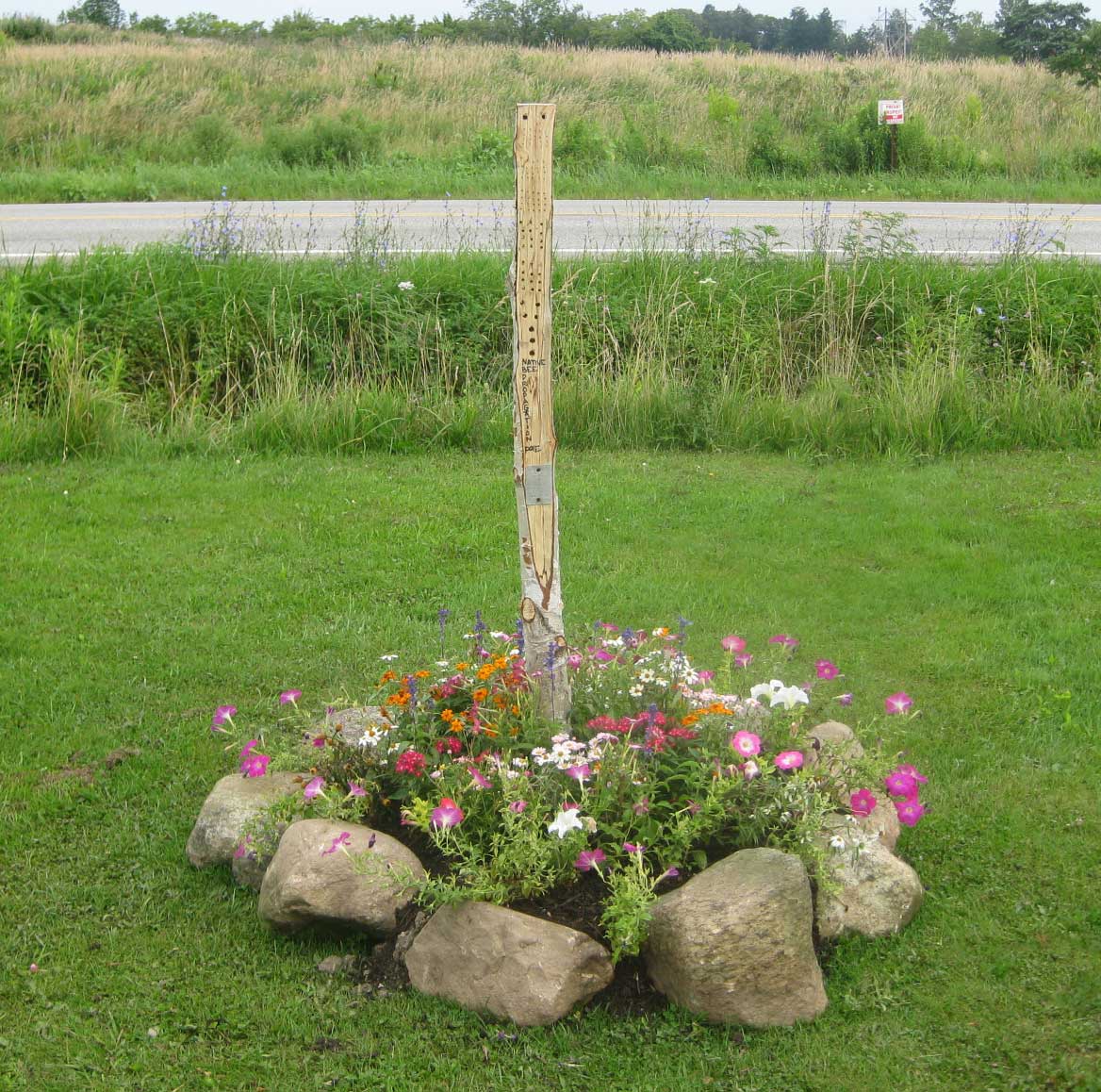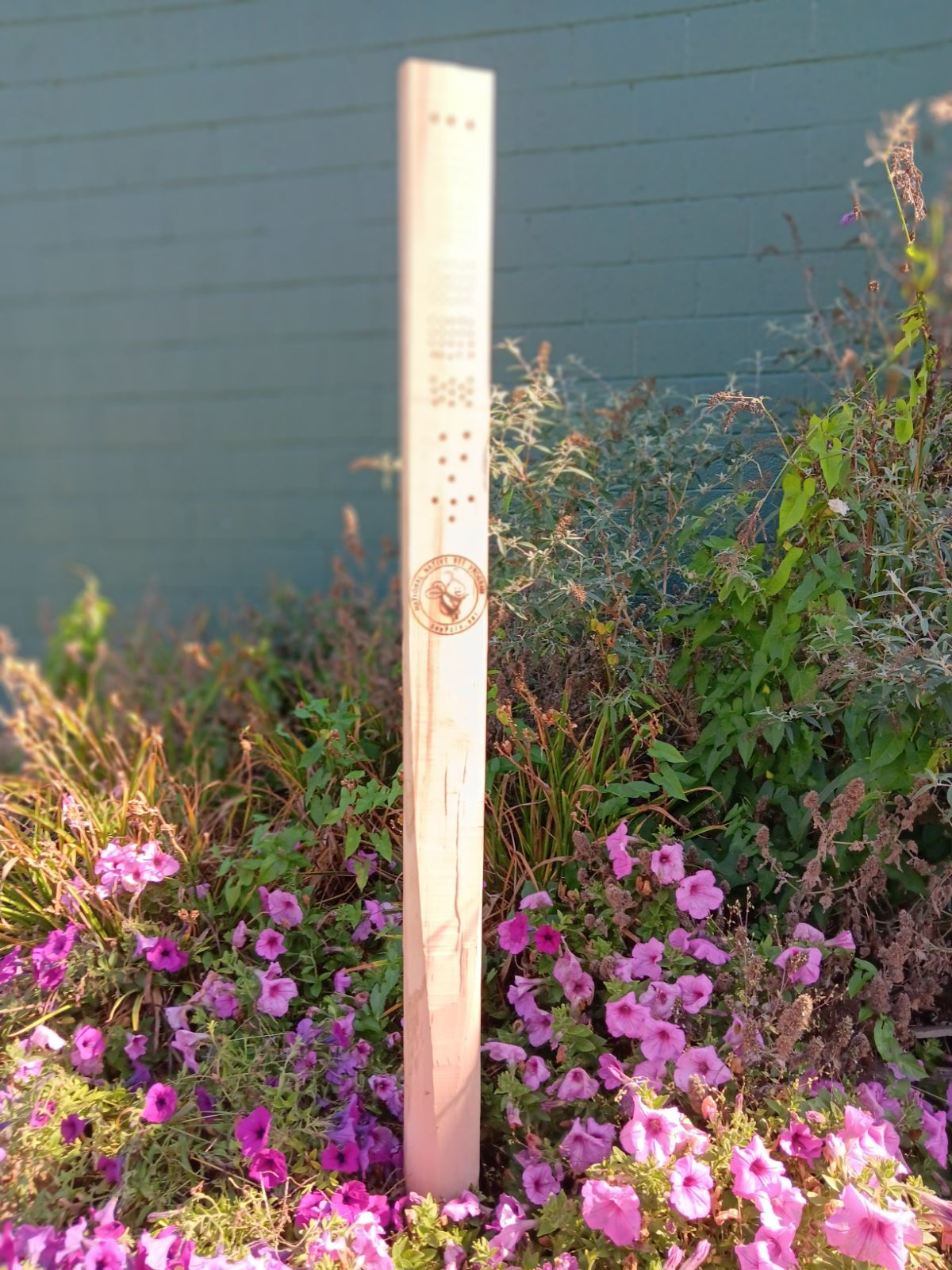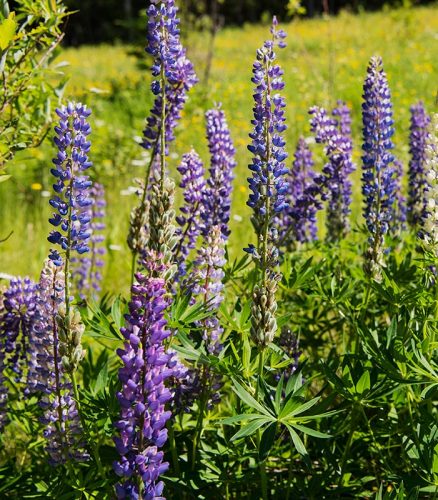
Native Bee Propagation Pole US Patent #7959486 B1
The bee pole is a length of untreated deadwood timber having a flattened face on a portion of that length. A first group of holes having a first diameter to foster propagation of a first type of solitary bee. At least one additional group of holes having a second larger diameter to foster propagation of a second type of solitary bee. The length of untreated deadwood timber may have an above ground length of 3 and 9 feet and a diameter of between 2″ and 6″. All but one of the first group of holes is drilled to a uniform first depth, with that one first hole being drilled deeper to foster growth of a queen bee of the first type of solitary bee. Hole depth of 0.5″ will produce a worker bee and a depth of 0.75″ will result in a queen bee. Similarly, all but one of the second group of holes is drilled to a uniform second depth, with the one second hole being drilled deeper to foster growth of a queen bee of the second type of solitary bee.
Put your Bee Pole in the ground 18”-24” deep with holes facing east/southeast to the rising sun.
The scent of the decomposing wood will attract native bees to the pole, where they will lay their eggs in the holes.
Native bees stay in a more localized area than the honey bees do.
Solitary native bees have demonstrated several highly desirable characteristics over honey bees for use as pollinators on several crops. Most notably, solitary bees are more efficient pollinators and efficient pollinators require far fewer bees to pollinate a field or orchard than honey bees.
Honey bees will work five times harder in areas where native bees are found.
Native bees may be the best bet as our future pollinators after the effects of colony collapse disorder are fully understood.
Native bees start pollination on average in five degrees colder weather than honey bees, and will work in overcast weather conditions and high humidity.

These poles could add another link to our knowledge about bee life and the way they carry on. The more we can figure out about colony collapse disorder, its causes and possible solutions, the better we all are.
Take the first step in doing your part to help save and protect native pollinators.

